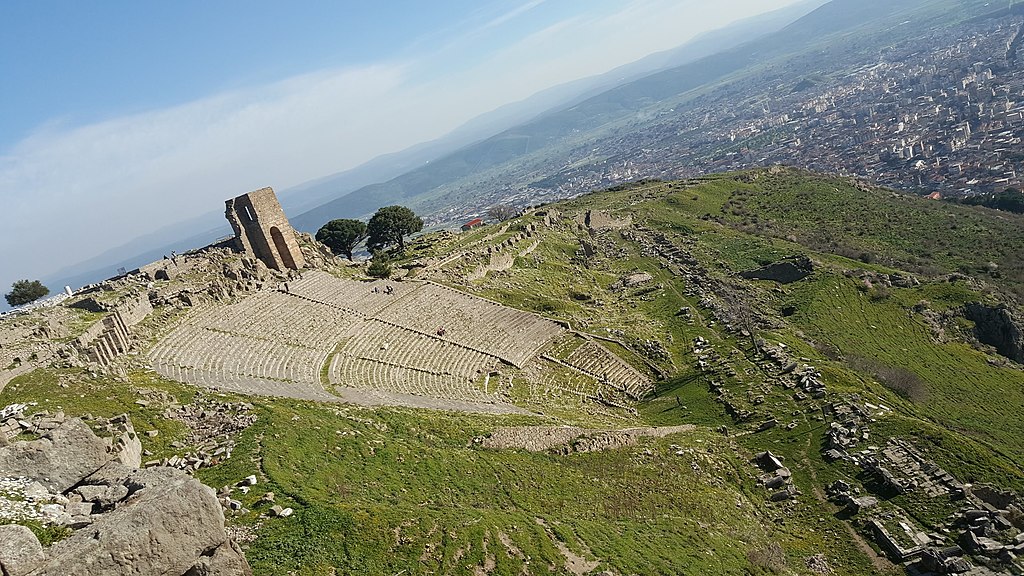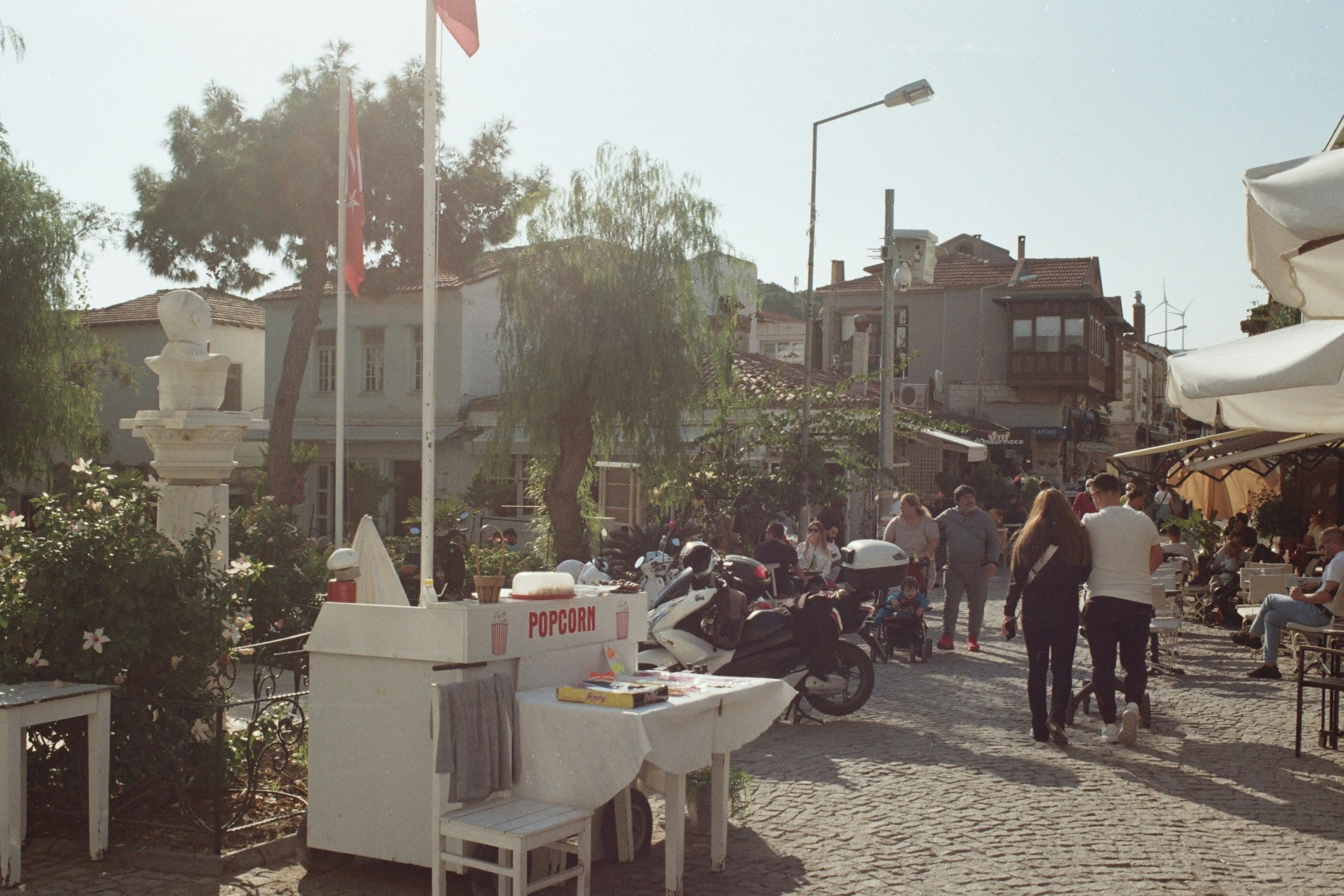Pergamon
Ancient City in Izmir

Rising high above the modern town of Bergama, Pergamon is a place where history feels larger than life. Once a powerful kingdom and a cultural center of the ancient world, this dramatic site combines awe-inspiring ruins with sweeping views over the Aegean plains. Its steep theatre, grand temples, and intricate stonework speak to a time when Pergamon rivaled Athens and Alexandria in beauty and intellect. For travelers who love history, architecture, and a touch of adventure, this is one of the best trips to go on from İzmir.
Visiting Pergamon is as much about the journey as the destination. The winding road to the top of the acropolis offers glimpses of olive groves and red-tiled villages before opening up to one of the most spectacular archaeological landscapes in Turkey. The air feels ancient here, carrying echoes of philosophers, healers, and emperors who once walked these same marble paths.
History and Significance
Pergamon's history stretches back to the 3rd century BCE, when it became the capital of the powerful Attalid dynasty. Under their rule, the city flourished as a center of art, learning, and science — second only to Alexandria in intellectual prestige. Its famous Library of Pergamon held over 200,000 scrolls and is said to have inspired the invention of parchment (pergamena in Latin), from which the city takes its name.
Later absorbed into the Roman Empire, Pergamon continued to thrive, becoming known for its temples dedicated to Athena, Zeus, and Trajan, as well as the Asclepion, one of the ancient world's leading medical sanctuaries. Today, the ruins preserve a remarkable glimpse into the sophistication of Hellenistic and Roman civilization.
Things to See and Do
The Acropolis of Pergamon is the highlight of any visit. Take the cable car up the hill for a breathtaking ride and start your exploration at the Theatre of Pergamon, one of the steepest in the ancient world, offering jaw-dropping views across the valley. The Temple of Trajan, with its towering marble columns, and the Altar of Zeus, now partially displayed in Berlin, are must-sees for lovers of classical architecture.
Down below, don't miss the Asclepion, where ancient physicians practiced early forms of holistic healing using baths, dreams, and herbal remedies. Walking through its colonnaded courtyards feels like stepping into a forgotten world of wisdom and spirituality.
Pergamon and the Seven Churches of the Apocalypse
Pergamon is one of the Seven Churches of the Apocalypse, the early Christian communities addressed by the Apostle John in the Book of Revelation. The full list includes:
- Pergamon (Bergama) – A powerful city of learning and pagan worship, commended for faithfulness despite spiritual challenges.
- Ephesus (Selçuk) – Once a great port city and center of early Christianity, praised for its faith but urged to rekindle its first love.
- Smyrna (İzmir) – A thriving trade hub known for its perseverance under persecution; modern-day İzmir carries echoes of its ancient faith.
- Thyatira (Akhisar) – A former trade and textile center, recognized for love and service but cautioned against false teachings.
- Sardis (Salihli) – Once a wealthy Lydian capital, rebuked for its spiritual complacency and urged to renew its strength.
- Philadelphia (Alaşehir) – Celebrated for steadfast faith and endurance, often called the “Church of Brotherly Love.”
- Laodicea (near Denizli) – A prosperous city known for its lukewarm faith, reminded to seek true spiritual riches.
Each church represents a unique message and spiritual lesson, and visiting them forms a pilgrimage through the heart of early Christianity in Asia Minor. Together, they trace a path across western Turkey that links some of the region's most stunning ancient ruins and sacred spaces — from Ephesus' grand theater to the silent stones of Sardis. Whether approached as a faith-based journey or a deep dive into history and archaeology, the Seven Churches route is a profound way to explore both the origins of Christianity and the enduring beauty of Anatolia.
Practical Information
- Best time to visit: April to June and September to October for comfortable temperatures and clear skies
- Entrance fee in Euros: Around €10 for the Acropolis; separate entry for the Asclepion
- Opening hours: 8:00 a.m. to 6:00 p.m. (varies by season)
- Official website: www.muze.gov.tr or local tourism board sites
- How long to spend: 3–4 hours for both the Acropolis and Asclepion
- Accessibility: Steep terrain at the Acropolis; cable car and walking paths available
- Facilities: Visitor center, café, restrooms, and shaded seating areas
- Photography tip: Capture panoramic shots from the top of the theatre — best light is early morning or late afternoon
- Guided tours: Available from İzmir or Bergama; private guides can provide deep historical context
Nearby Food Options
Bergama offers plenty of cozy local eateries serving traditional Turkish cuisine. Try Bergama köfte (spiced meatballs) at a local restaurant near the town center, paired with fresh ayran or grape juice. Many cafés near the entrance to the site also serve gözleme, tea, and pastries, perfect for a post-exploration snack.
Nearby Attractions
- Asclepion: The ancient healing center located at the foot of the Acropolis.
- Red Basilica (Kızıl Avlu): A massive red-brick temple built by the Romans, later converted into a Byzantine church.
- Dikili: A nearby coastal town ideal for a relaxing swim or seafood lunch after a day of ruins.
- Ayvalık: A scenic seaside town about an hour away, known for its olive oil and historic Greek houses.
Together, these nearby sites make Pergamon one of the best places to go on a day trip from İzmir, offering an unforgettable mix of history, landscape, and local culture.
The Pergamon appears in our Complete Guide to Visiting Izmir!
This website uses affiliate links which may earn a commission at no additional cost to you!
Visiting Pergamon
8:00 a.m. to 6:00 p.m. (varies by season)
Around €10 for the Acropolis; separate entry for the Asclepion
Nearby Attractions
- Akhisar (Thyatira) (61.1) km
Ancient City in Izmir - İzmir Natural Life Park (74.3) km
Wildlife Park in Izmir - Ethnography Museum, İzmir (77.5) km
Museum in Izmir - İzmir Museum of History and Art (77.5) km
Museum in Izmir - İzmir Ataturk Museum (77.6) km
Museum in Izmir - Kordon Promenade (77.9) km
Promenade in Izmir - Kültürpark (78.4) km
Park in Izmir - Konak Pier (79.1) km
Pier in Izmir - Hisar Mosque (Hisar Camii) (79.2) km
Mosque in Izmir - Kızlarağası Han Bazaar (79.3) km
Bazaar in Izmir



